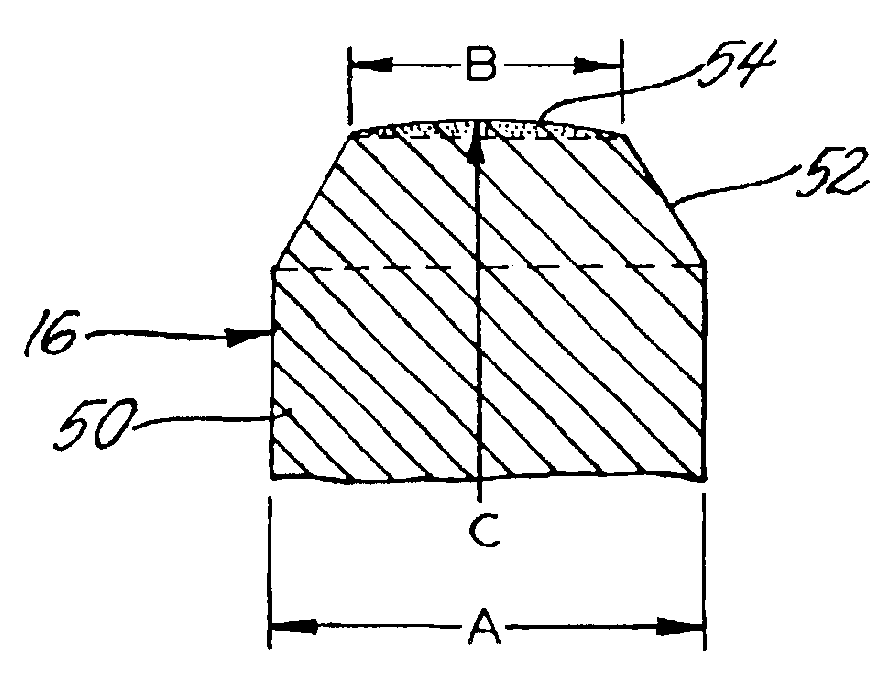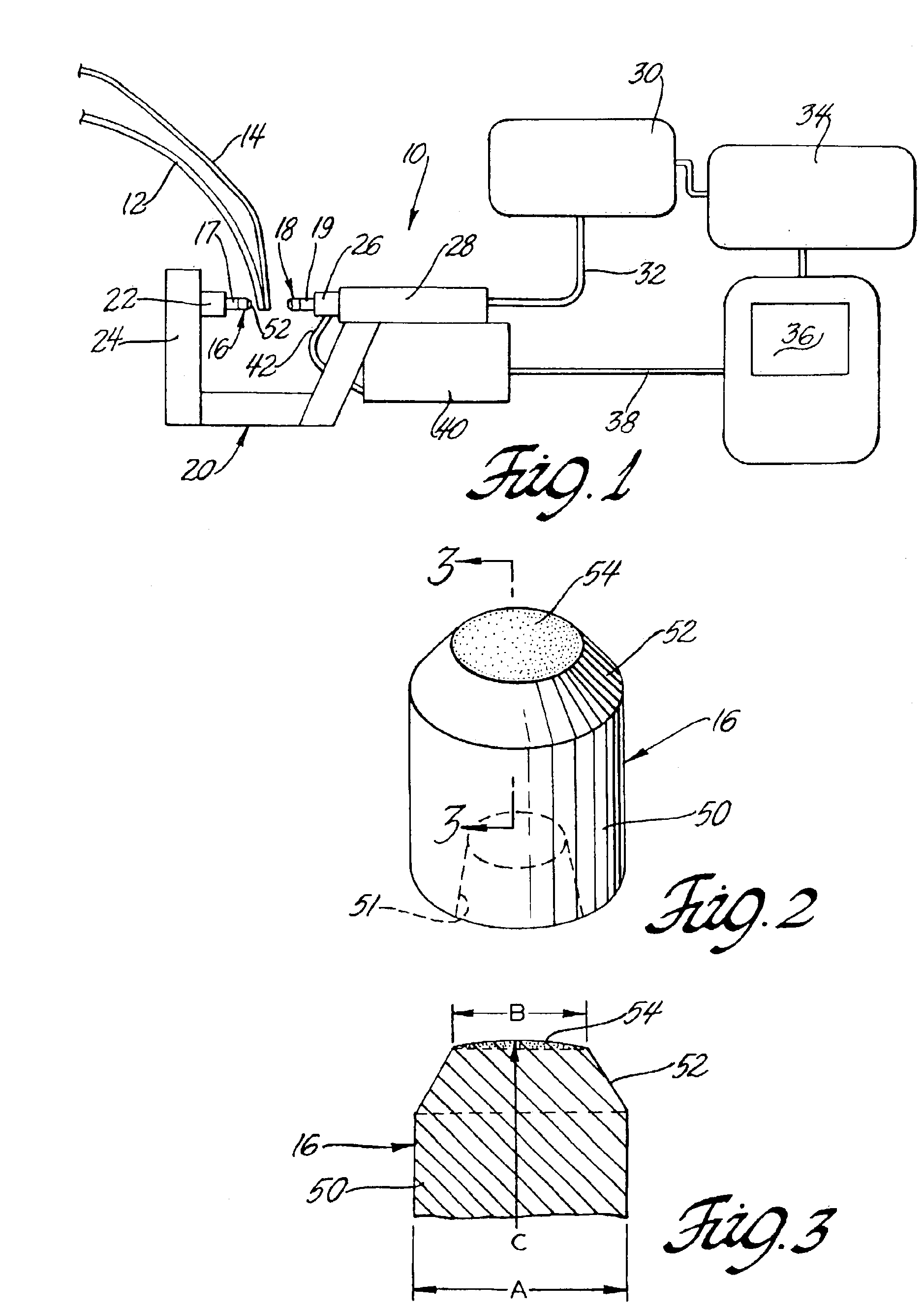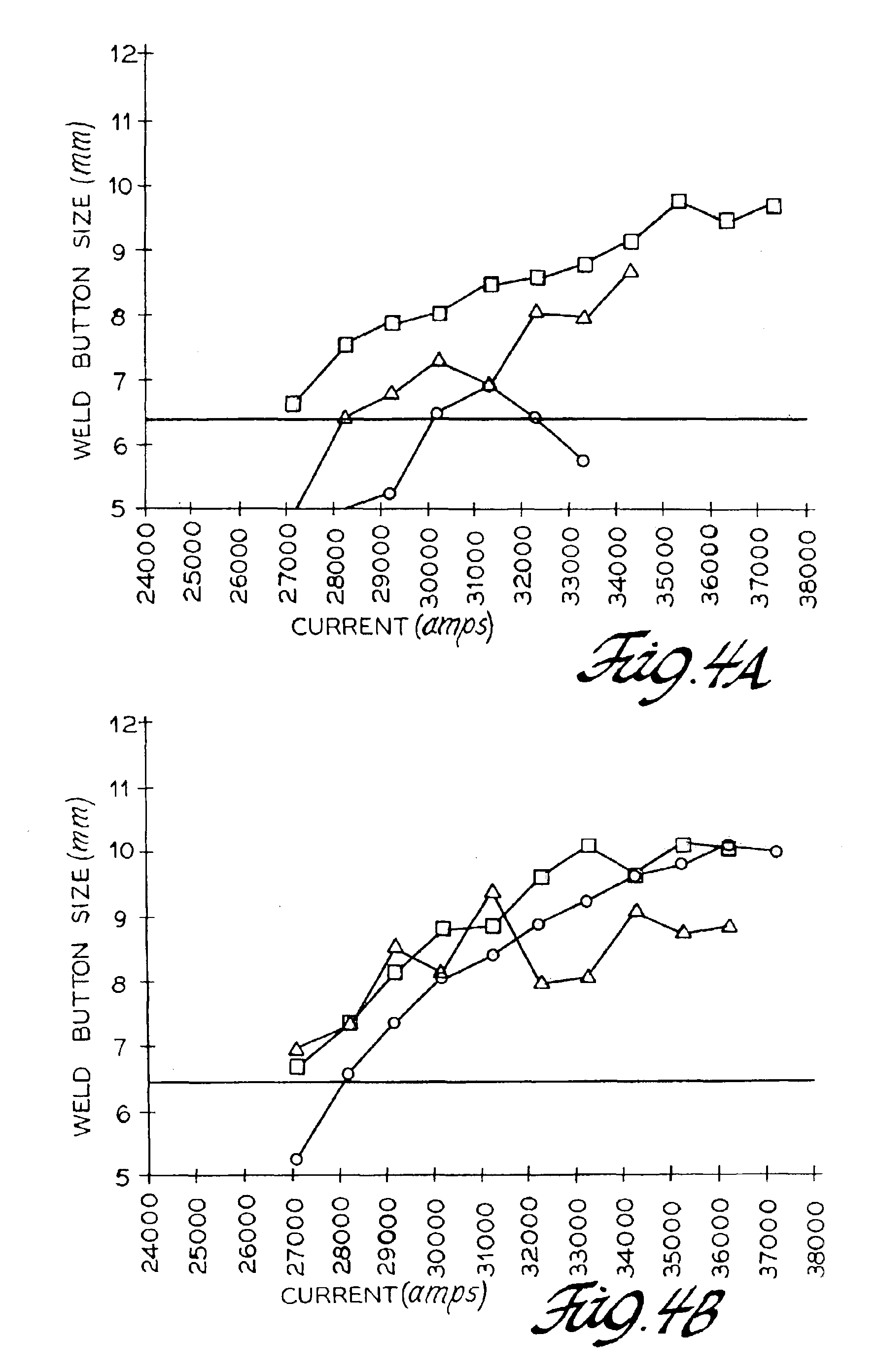Welding electrode for aluminum sheets
a welding electrode and aluminum sheet technology, applied in welding/cutting media/materials, welding apparatus, manufacturing tools, etc., can solve problems such as complicated creation of flexible welding centers
- Summary
- Abstract
- Description
- Claims
- Application Information
AI Technical Summary
Benefits of technology
Problems solved by technology
Method used
Image
Examples
Embodiment Construction
This invention provides a universal spot-welding electrode design for use in welding operations that are to be successively applied in spot-welding assemblies of aluminum alloy sheet metal of varying thicknesses. Often welding assemblies have been set up to perform substantially the same spot-weld on an identical assembly of aluminum alloy sheet pieces time after time. In other words, a particular welding gun with suitably sized and shaped welding electrodes repeatedly forms spot-welds on aluminum alloy sheets each having a thickness of, for example, 1.5 mm. Thus, the welding electrodes are specifically designed to provide good weld contact with the surfaces of these sheets at the weld sites.
As described above, The Aluminum Association, Inc. identifies ten different sheet metal thickness steps from 0.6 mm in thickness to 3.2 mm thickness for the thickness of the thinner layer in the weld assembly. And corresponding to this thickness groups are five different electrode face diameter ...
PUM
| Property | Measurement | Unit |
|---|---|---|
| thickness | aaaaa | aaaaa |
| diameter | aaaaa | aaaaa |
| diameter | aaaaa | aaaaa |
Abstract
Description
Claims
Application Information
 Login to View More
Login to View More - R&D
- Intellectual Property
- Life Sciences
- Materials
- Tech Scout
- Unparalleled Data Quality
- Higher Quality Content
- 60% Fewer Hallucinations
Browse by: Latest US Patents, China's latest patents, Technical Efficacy Thesaurus, Application Domain, Technology Topic, Popular Technical Reports.
© 2025 PatSnap. All rights reserved.Legal|Privacy policy|Modern Slavery Act Transparency Statement|Sitemap|About US| Contact US: help@patsnap.com



